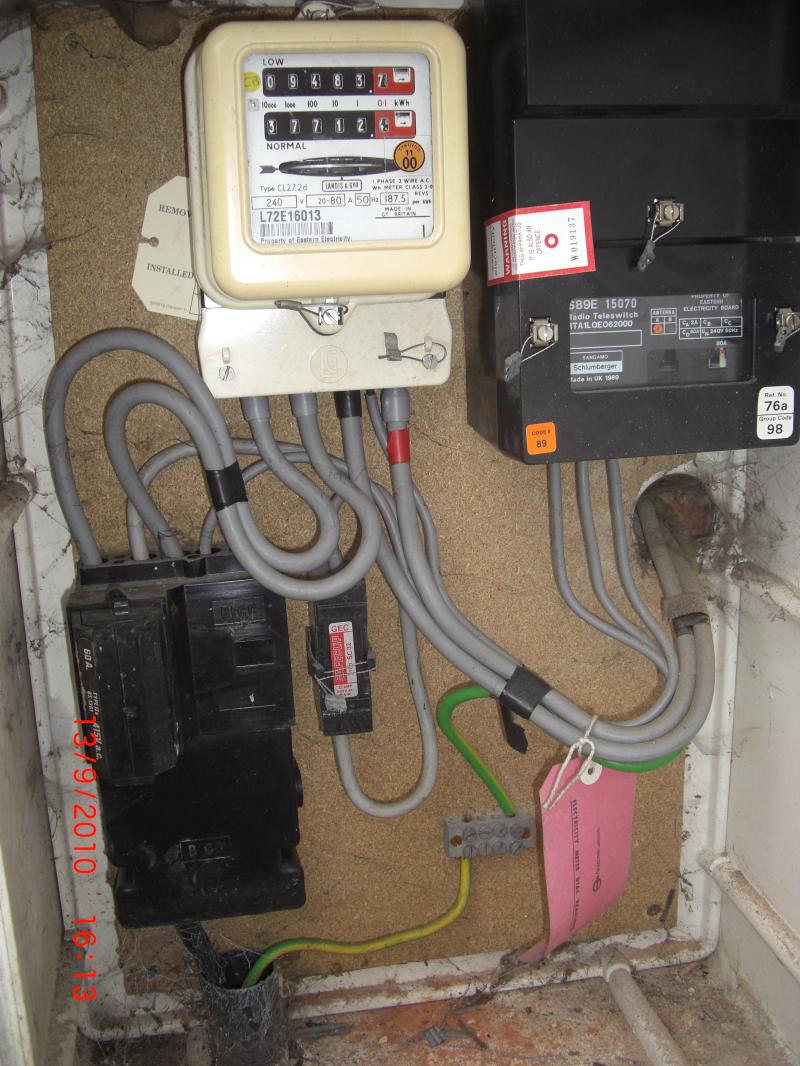Hi
I am trying to understand the arrangemnt in my main incoming supply. Could some please explain the following:
1. Why is the main service 60A fuse is not sealed.
2. Why do I have a 32A sealand fuse to the right of the main service fuse, what is this for.
3. What is the black box to the right of the meter.
4. I am used to seeing just a main L & N supply going into a meter and from there tails going into the CU, but do not understand this one in the picture.
5. Is it possible to get the DNO to rip this out and just install a standard meter with a DP switch disconector in the tails.
Thank you



